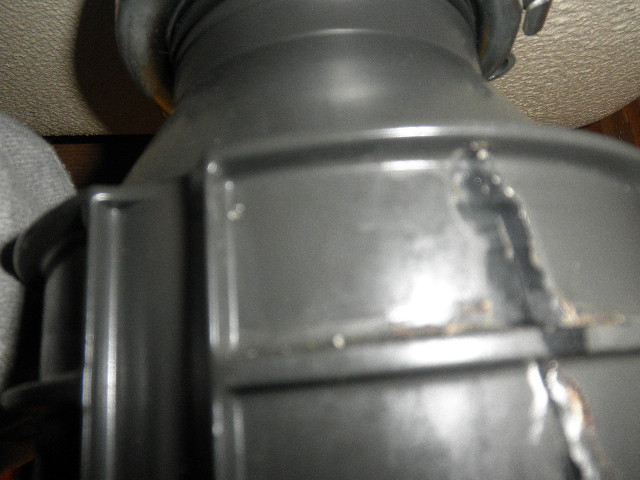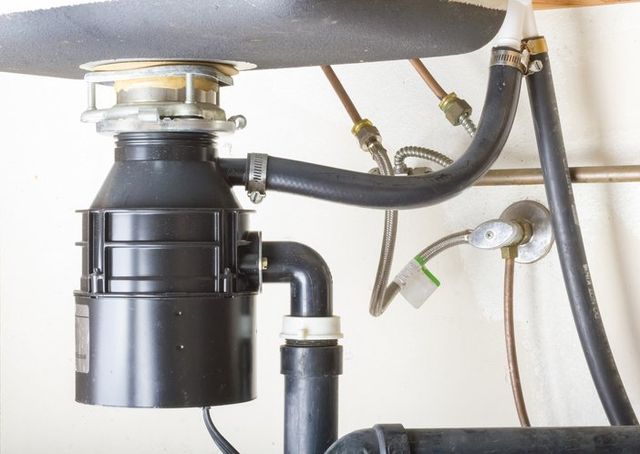Highly-Rated Methods for Resolving a Leak in Your Garbage Disposal
Highly-Rated Methods for Resolving a Leak in Your Garbage Disposal
Blog Article
The article author is making a few great observations on Garbage Disposal Leaking From Bottom in general in this post beneath.

Waste disposal unit are crucial cooking area devices that help in disposing of food waste efficiently. However, a dripping waste disposal unit can be an irritating and unpleasant issue to take care of. Fortunately, lots of leakages can be fixed conveniently with a couple of basic steps. In this write-up, we will certainly go over how to fix a dripping garbage disposal efficiently.
Introduction
Waste disposal unit are installed under kitchen sinks and are made to shred food waste into smaller sized pieces, permitting it to travel through the pipes system easily. While these tools are usually reputable, leaks can happen in time because of deterioration, loose links, or damage to the device.
Step-by-Step Guide to Repairing a Dripping Waste Disposal Unit
Shut off the Power
Before attempting any fixings, make sure that the power to the garbage disposal unit is shut off to stop the risk of electric shock.
Locate the Leakage
Determine the specific place of the leak and determine the cause
Tighten Links
Make use of a wrench to tighten up any kind of loose links between the disposal unit and the pipes system.
Replace Seals or Gaskets
If the leakage results from worn seals or gaskets, eliminate the old elements and change them with brand-new ones.
Patching Cracks or Holes
For splits or holes in the disposal unit, use epoxy or an appropriate patching product to secure the broken location.
Determining the Resource of the Leak
Prior to trying to take care of a leaking waste disposal unit, it is essential to determine the source of the leak. This can typically be done via visual inspection or by performing straightforward examinations.
Visual Examination
Examine the waste disposal unit unit meticulously for any kind of indicators of water leak. Pay very close attention to locations around seals, gaskets, and connection factors.
Checking for Leakages
One method to check for leakages is by running water with the disposal system and looking for any noticeable indicators of leak.
Typical Sources Of Leaks in Trash Disposals
Worn Seals and Gaskets
Seals and gaskets play a critical role in protecting against water from dripping out of the waste disposal unit. With time, these elements can wear away, resulting in leaks around the disposal unit.
Loose Connections
The links between the waste disposal unit and the pipes system can come to be loosened gradually, causing water to leak out throughout operation.
Splits or Holes in the Disposal Unit
Physical damage to the waste disposal unit, such as splits or holes in the real estate, can also lead to leaks.
Tools and Materials Needed for Taking Care Of a Leaking Garbage Disposal
Before beginning the repair service process, collect the needed devices and materials, including a screwdriver, adjustable wrench, plumbing technician's putty, substitute seals or gaskets, and epoxy or patching product for fixing fractures or openings.
Evaluating the Waste Disposal Unit After Repair Work
When the repair work is complete, evaluate the garbage disposal by running water with it to ensure that the leak has actually been settled.
Preventive Upkeep Tips to Prevent Future Leaks
To stop future leakages, it is vital to do routine upkeep on your waste disposal unit. This includes keeping it tidy, preventing putting non-food products or difficult items down the disposal, and periodically checking for leakages or other issues.
Conclusion
In conclusion, fixing a leaking garbage disposal is a fairly uncomplicated procedure that can be completed with basic devices and products. By following the actions laid out in this article and exercising preventive upkeep, you can maintain your garbage disposal in good working problem and stay clear of expensive repair work in the future.
What to Do About a Leaking Garbage Disposal
A leaking garbage disposal often goes unnoticed until you confront a sopping cabinet, a foul-smelling puddle, or an audible drip-drip-drip from the unit. The fix can be frustrating, too, because the leak can stem from a number of components in the system. Fortunately, with a little sleuthing, you can zero in on the leak and—depending on the exact location—stop the icky oozing and repair the component that caused it. Worst case scenario, if it turns out that the garbage disposal must be replaced, installing a new one is a reasonable do-it-yourself task for those with basic plumbing skills. Read on to keep the cash you’d otherwise hand over to a pro.
Prepare to find the leak
Prior to testing the garbage disposal for leaks, unplug it at the wall outlet and turn off the power from the breaker box to prevent electrical shock. Then insert a watertight sink stopper into your sink drain and wipe the unit dry with a clean cloth. In any handy container, mix a few drops of food coloring into a few cups of water, and pour the dyed water onto the sink stopper to help you locate the leak.
Investigate the source
the top, where the disposal meets the sink drain the side, where the dishwasher hose or main drain pipe connects to the disposal or the bottom of the unit Inspect each of these locations while gliding a light-colored rag over the unit; the dyed water will readily show on the rag and reveal the location of the leak. If a leak isn’t immediately apparent, remove the sink stopper and pour a few more cups of dyed water down the sink drain, then check for leaks again. Leaks near the top of the unit are more likely to show themselves while the sink is plugged, while side and bottom leaks are more noticeable while the sink is unplugged.
The metal sink flange that sits directly inside the sink drain is typically sealed around the top with plumber’s putty (a clay-like sealant) and then secured from under the sink with bolts. If the plumber’s putty deteriorates, or the bolts loosen, the flange can no longer form a watertight seal between the sink drain and the disposal—which could cause a leak at the top of the unit.
To reseal the leaky flange, you must first detach the garbage disposal. Start by loosening the screws securing the main drain pipe to the disposal, then loosen the screws in the metal clamp securing the dishwasher hose to the disposal and detach the drain pipe and dishwasher hose from the disposal. Loosen the screws in the mounting ring that connects the disposal to the metal mounting assembly beneath the sink, then pull down the disposal and carefully set it on a clean, dry surface. Loosen the bolts in the mounting assembly with a wrench, then pull down the mounting assembly and set it near the disposal.

Do you really like reading about Why Is ? Leave a remark down below. We'd be pleased to listen to your thinking about this blog entry. We are looking forward to see you back again before long. Enjoyed reading our piece of writing? Please share it. Let another person find it. Thanks a bunch for your time. Visit us again soon.
Top Article Report this page